Why you can trust Tom's Hardware
AMD Ryzen 7 5700X3D Productivity Application Benchmarks, the TLDR:
We boil down productivity application performance into two broad categories: single- and multi-threaded. These slides show the geometric mean of performance in several of our most important tests in each of these categories, but be sure to look at the expanded results below for more granular analysis.

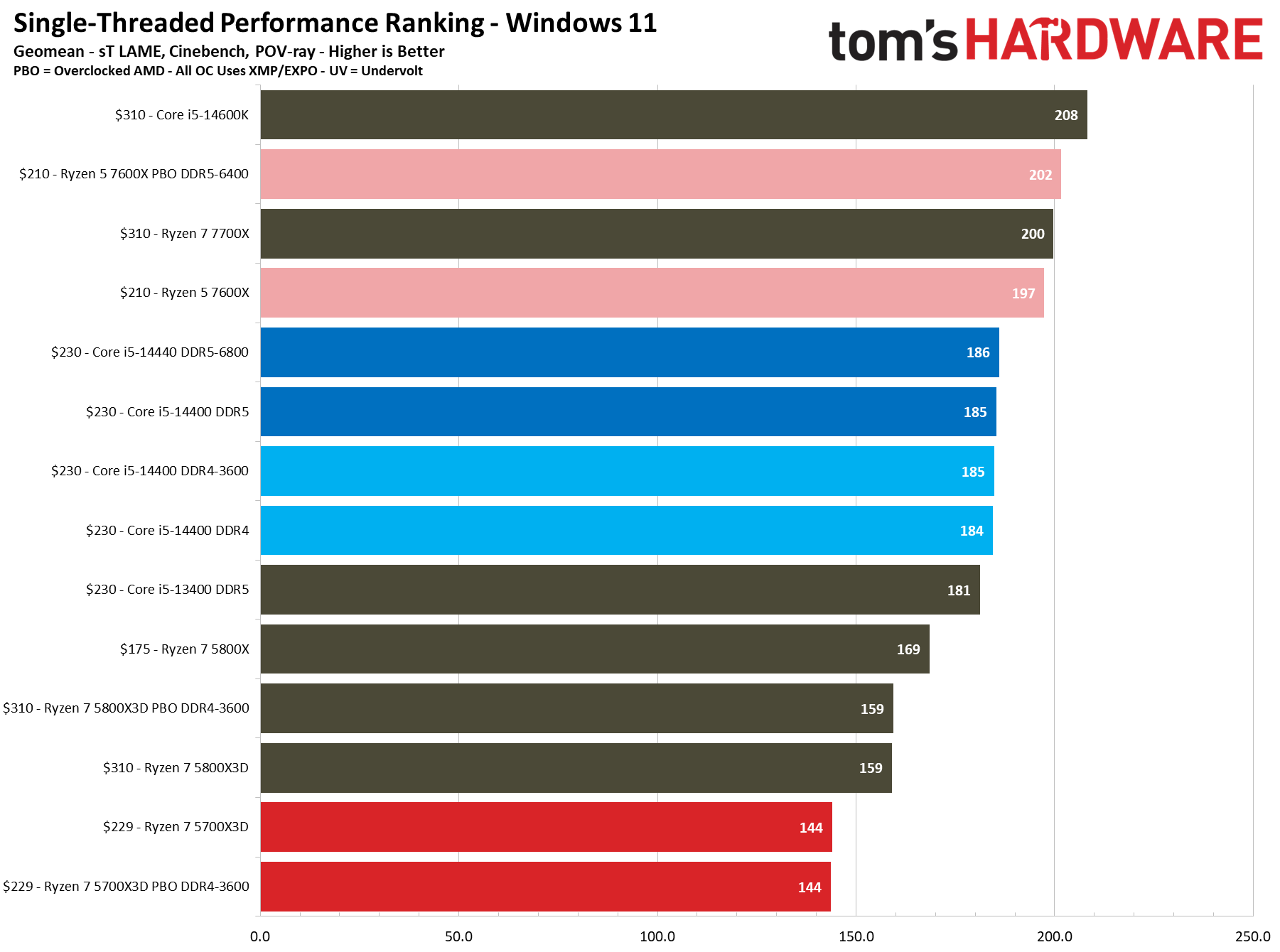
AMD's 3D V-Cache tech works wonders for gaming, but it results in lower voltages and frequencies that reduce performance in productivity applications compared to AMD's standard models. The Ryzen 5000X3D chips for the AM4 platform also use the older Zen 3 microarchitecture rather than the new Zen 4, which also results in further declines relative to newer Ryzen 7000 and 7000X3D processors.
That leaves the Ryzen 7 5700X3D with a very clear advantage in gaming, but a very clear disadvantage in productivity applications. The Core i5-14400 is 10% faster in multi-threaded work and 27% faster in single-threaded applications than the 5700X3D, so it offers a much more balanced profile overall.
If you're looking for a more balanced Ryzen chip that's even better than the Core i5-14400, the $210 Ryzen 5 7600X fits the bill. This chip is 6% faster than the Core i5-14400 in single-threaded work and 3% faster in multi-threaded applications, so it's a solid all-rounder if you prize performance in productivity workloads. It's also 14% faster in multi-threaded and 37% faster in single-threaded workloads than the Ryzen 7 5700X3D.
The Ryzen 7 5700X3D is 9% slower in gaming than the Ryzen 7 5800X3D, but 7% slower in multi-threaded and 10% slower in single-threaded productivity applications.
We're also incredibly impressed that the 5700X3D can beat the stock $310 Core i5-14600K in gaming, but we'd be remiss if we didn't mention that the 14600K is 58% faster in multi-threaded and 44% faster in single-threaded work. These chips come with drastically different price points and thermal/power profiles, so bear in mind that they aren't direct competitors.
Rendering Benchmarks on AMD Ryzen 7 5700X3D
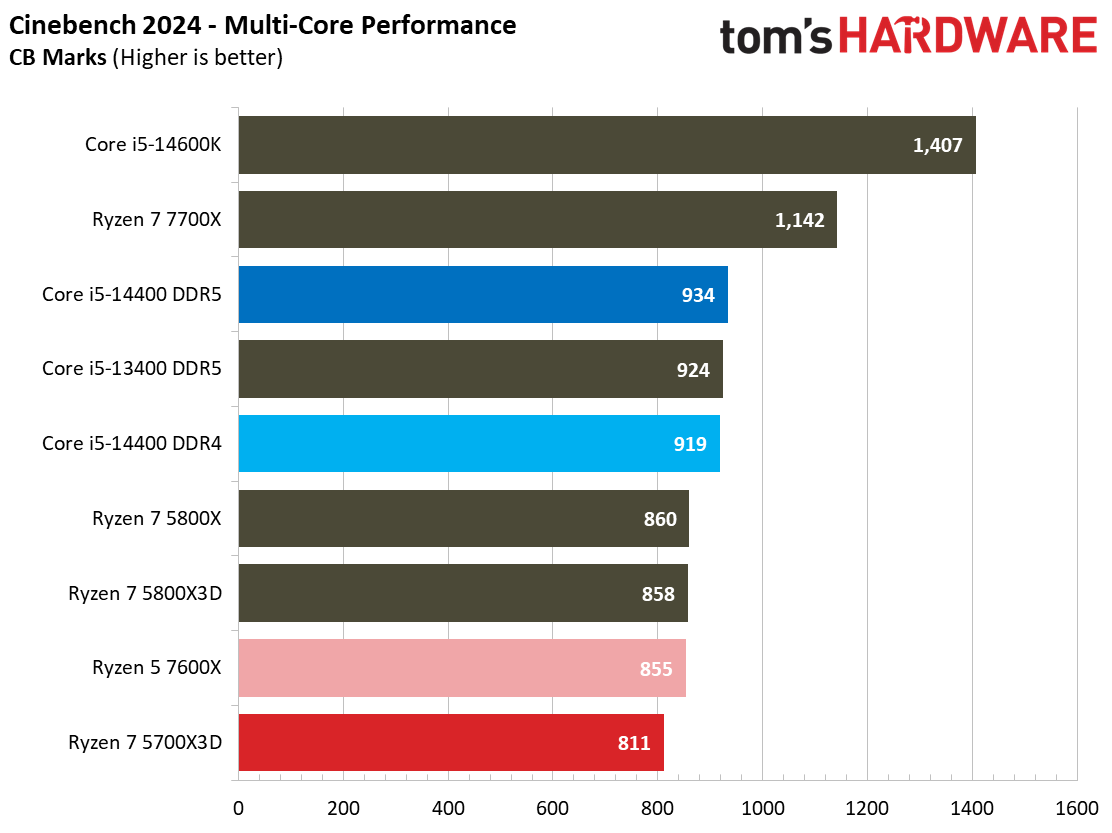
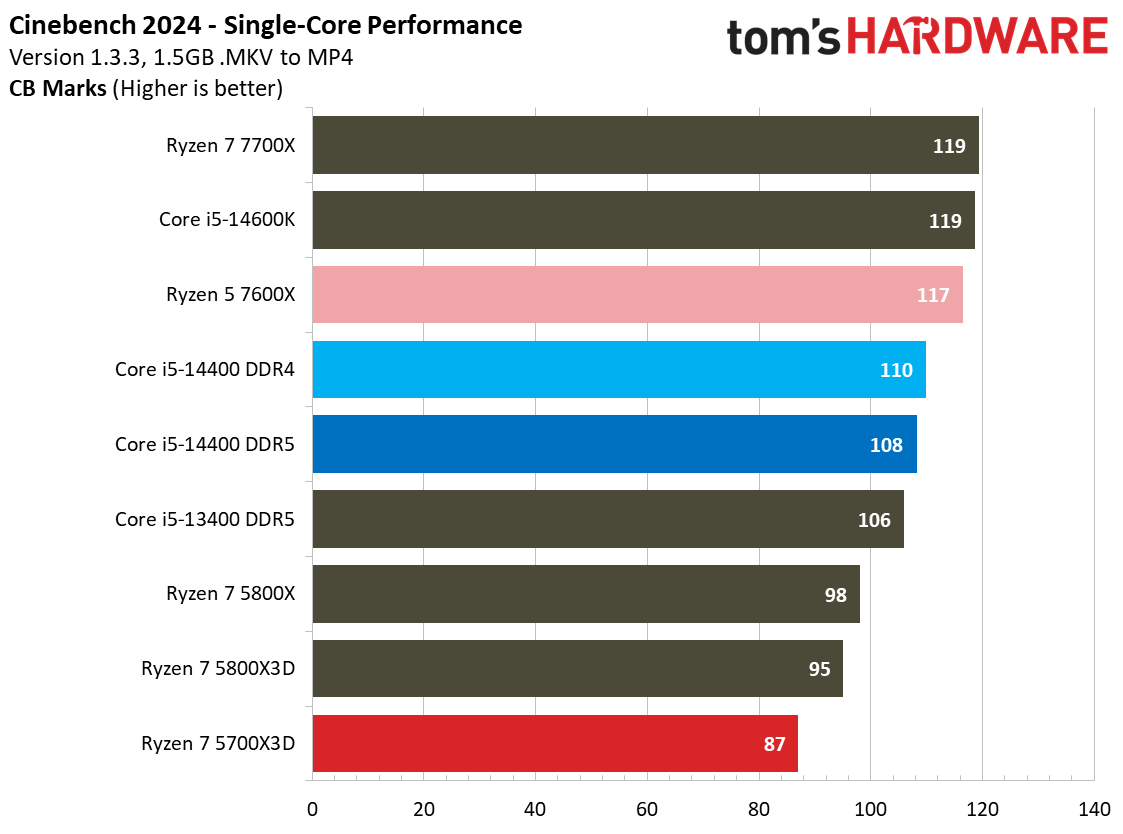

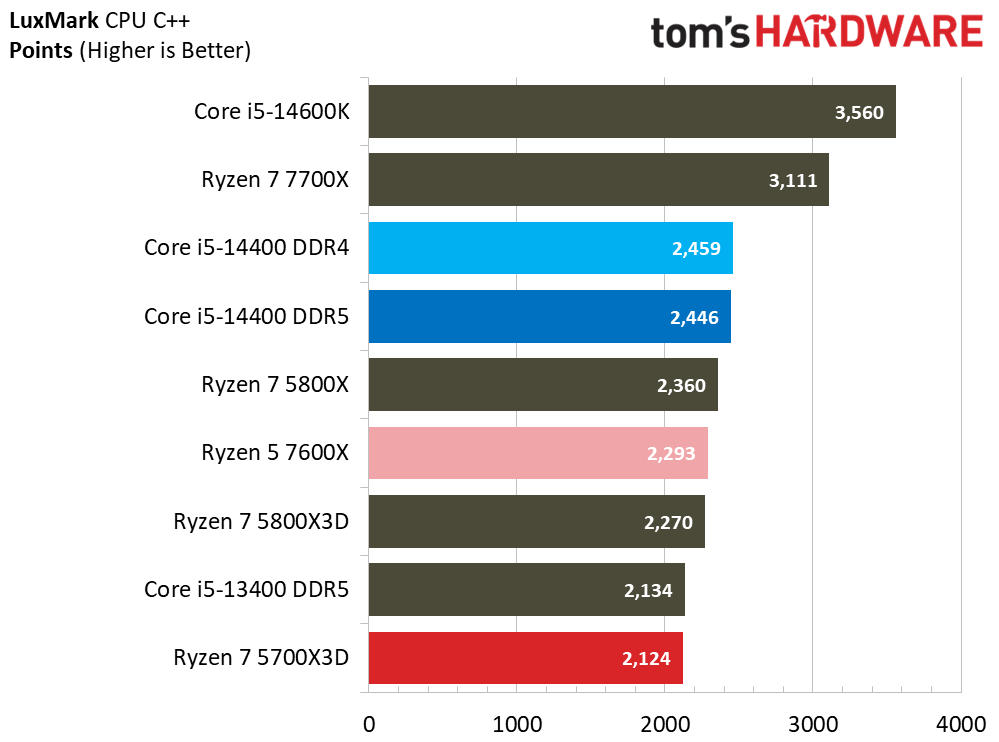
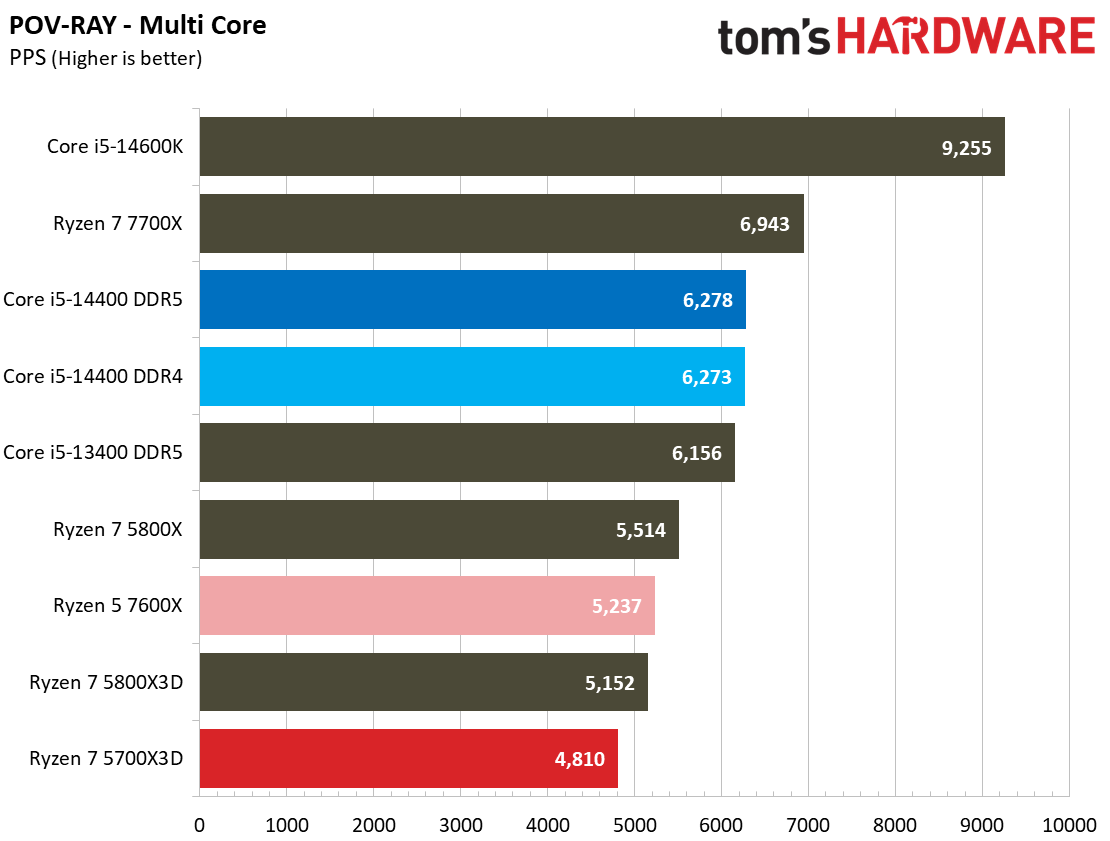
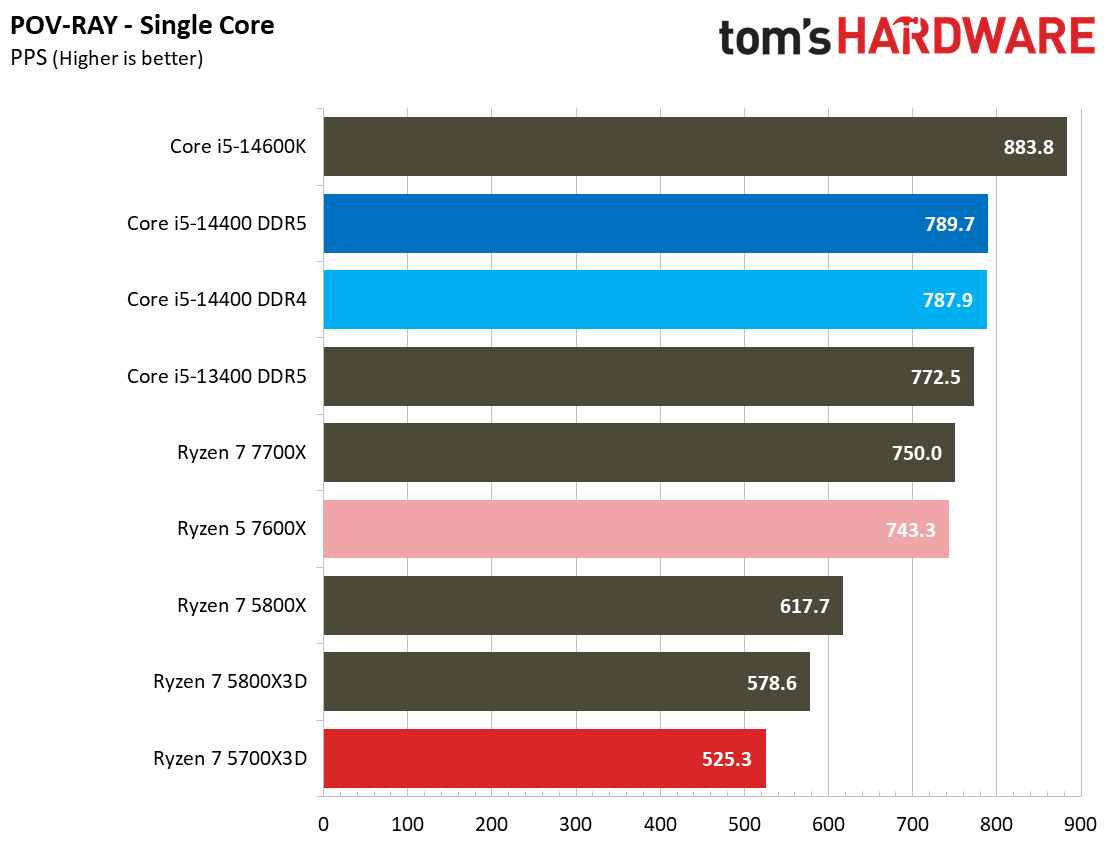
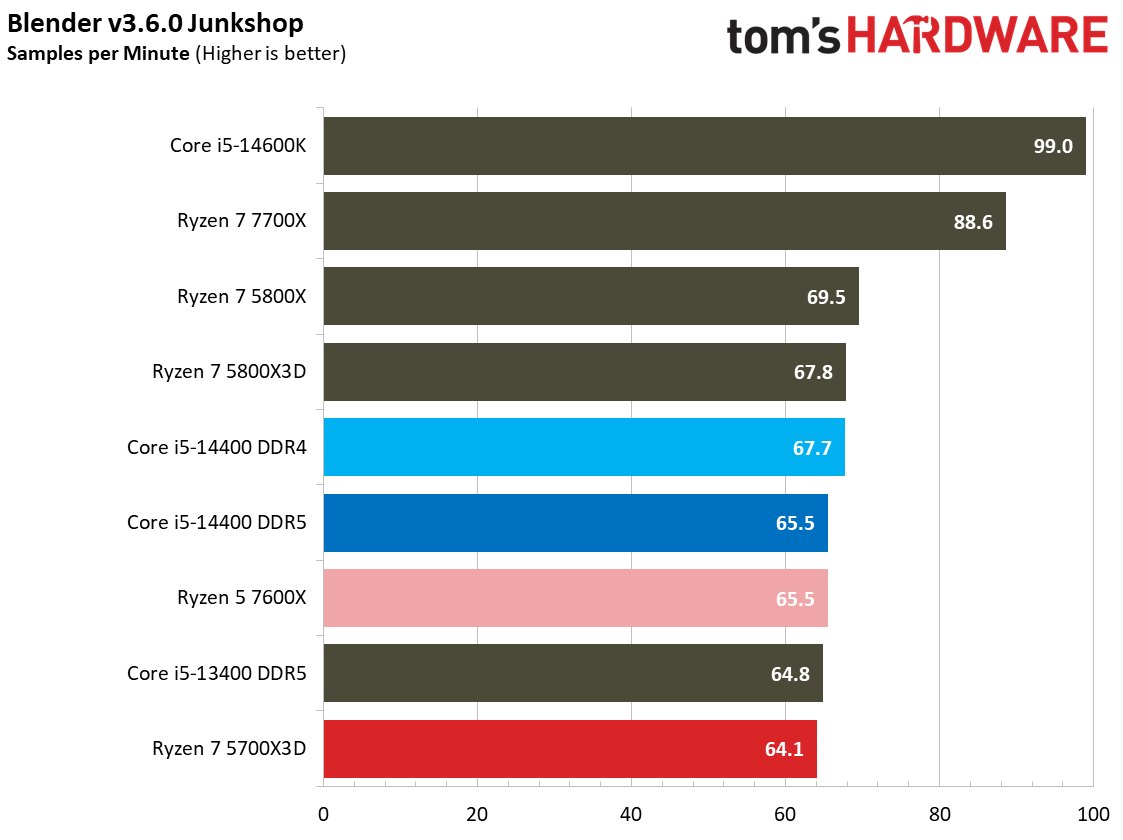
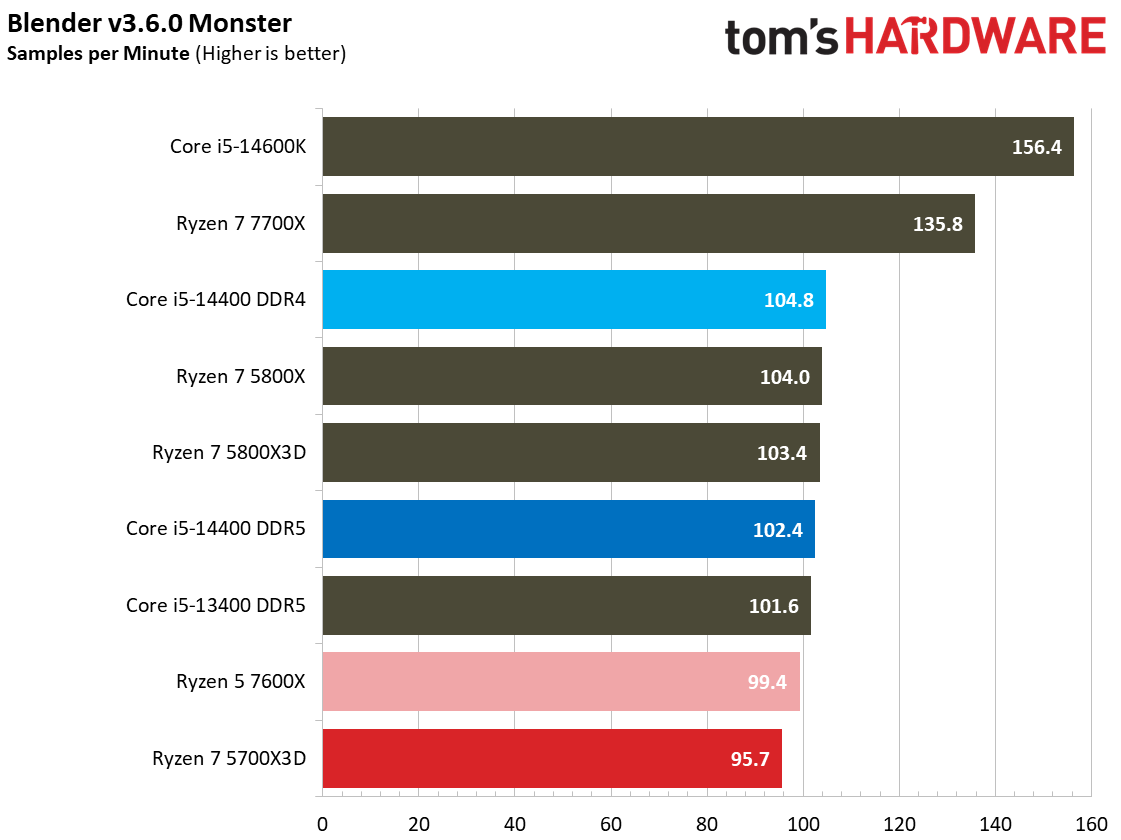
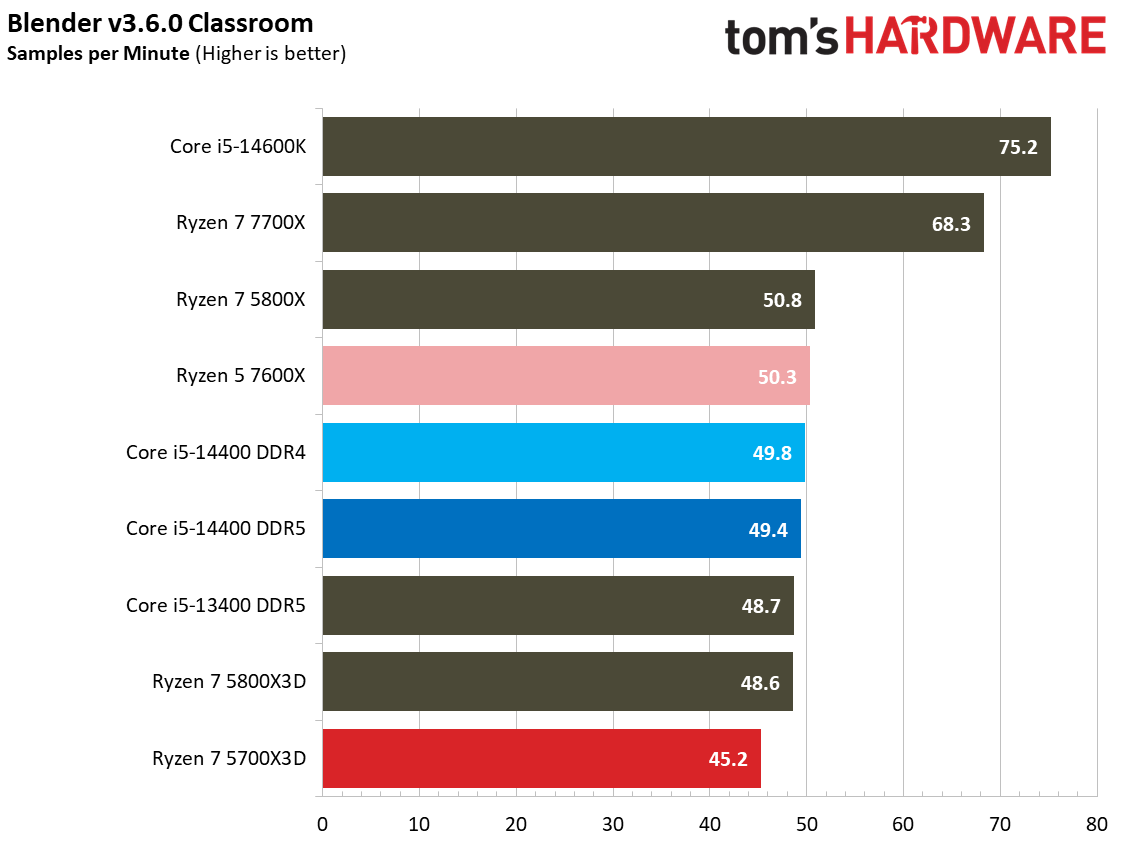

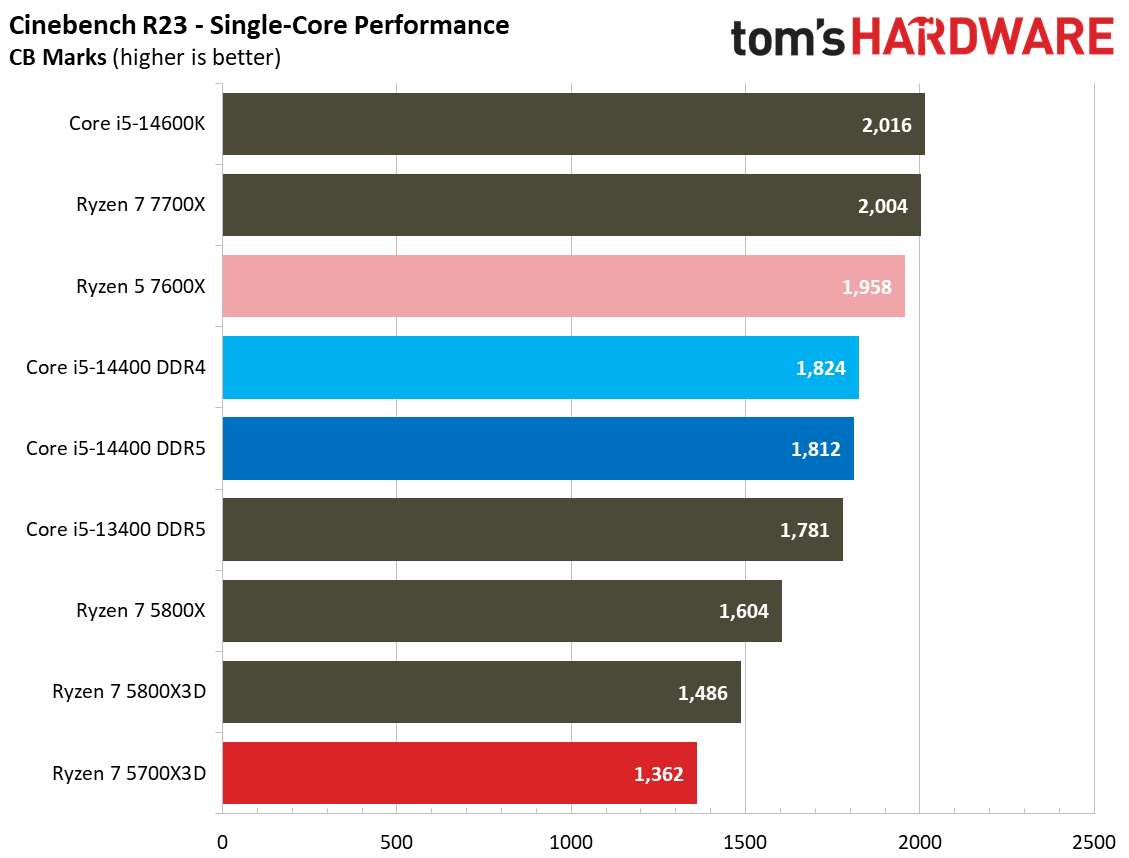


The Ryzen 7 5700X3D predictably lags in all of these benchmarks, highlighting that you'll need to select another option if you're looking for the utmost in rendering performance.
Get Tom's Hardware's best news and in-depth reviews, straight to your inbox.
Encoding Benchmarks on AMD Ryzen 7 5700X3D
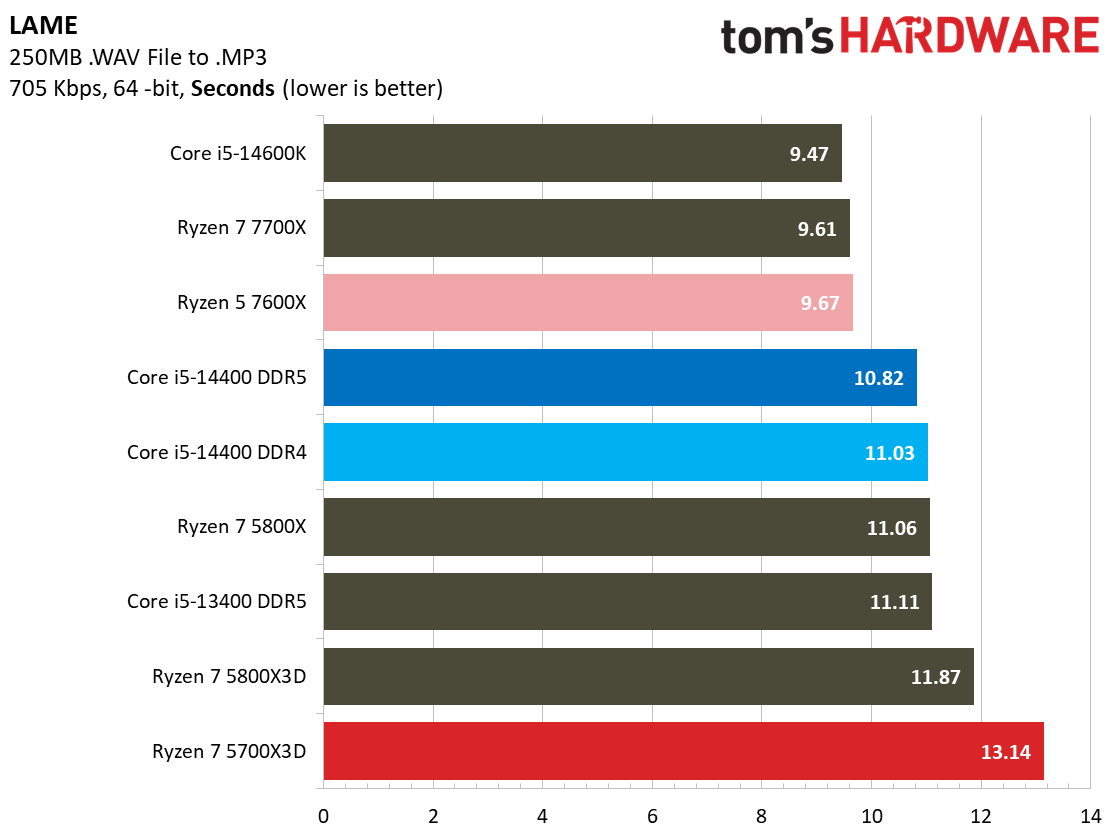
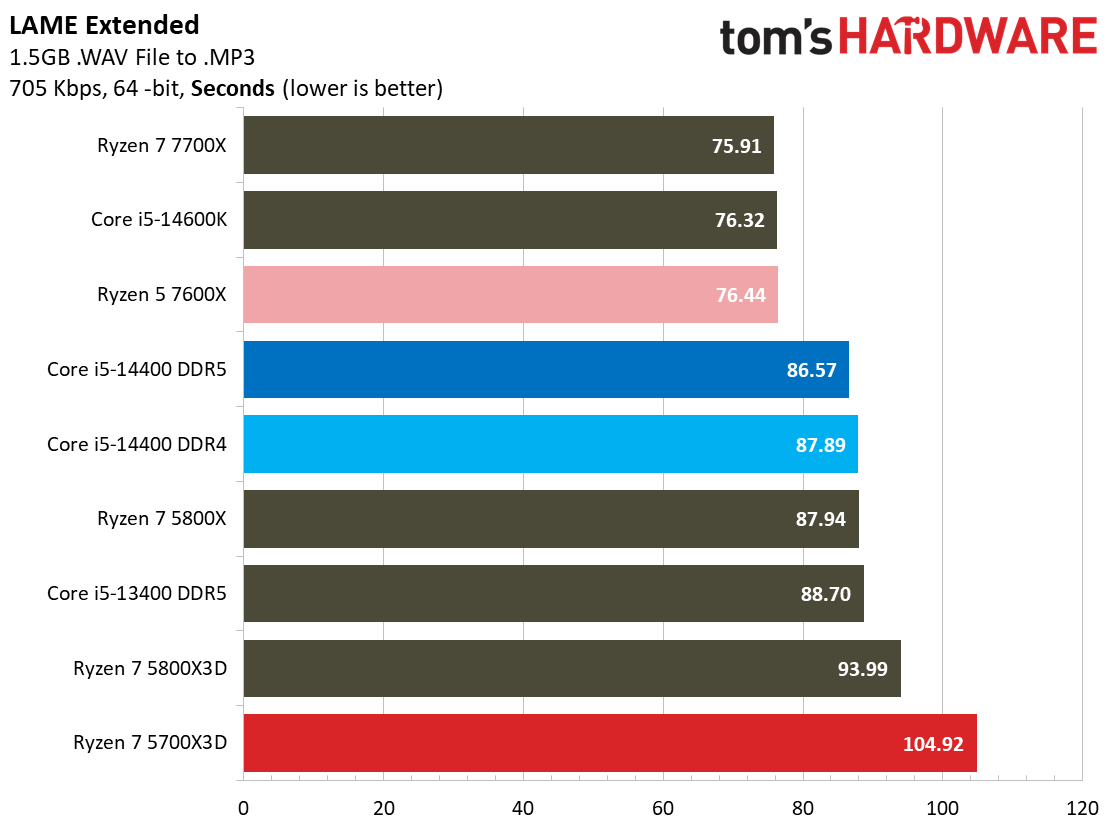

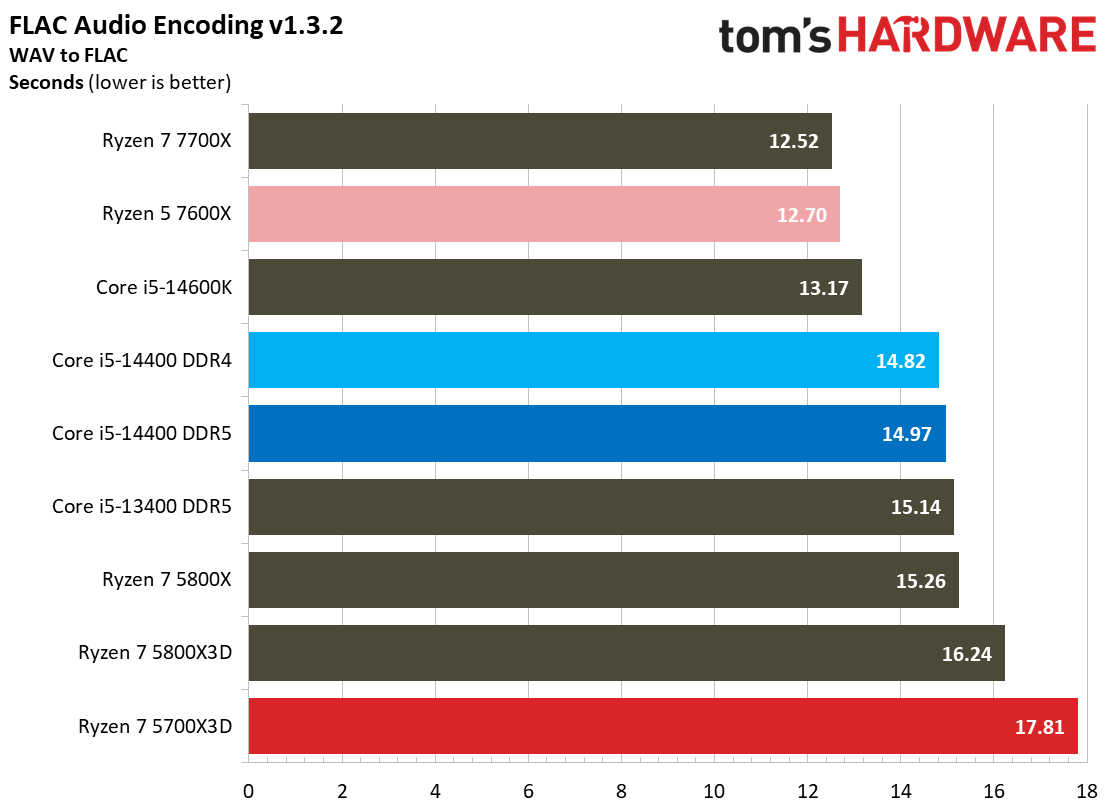

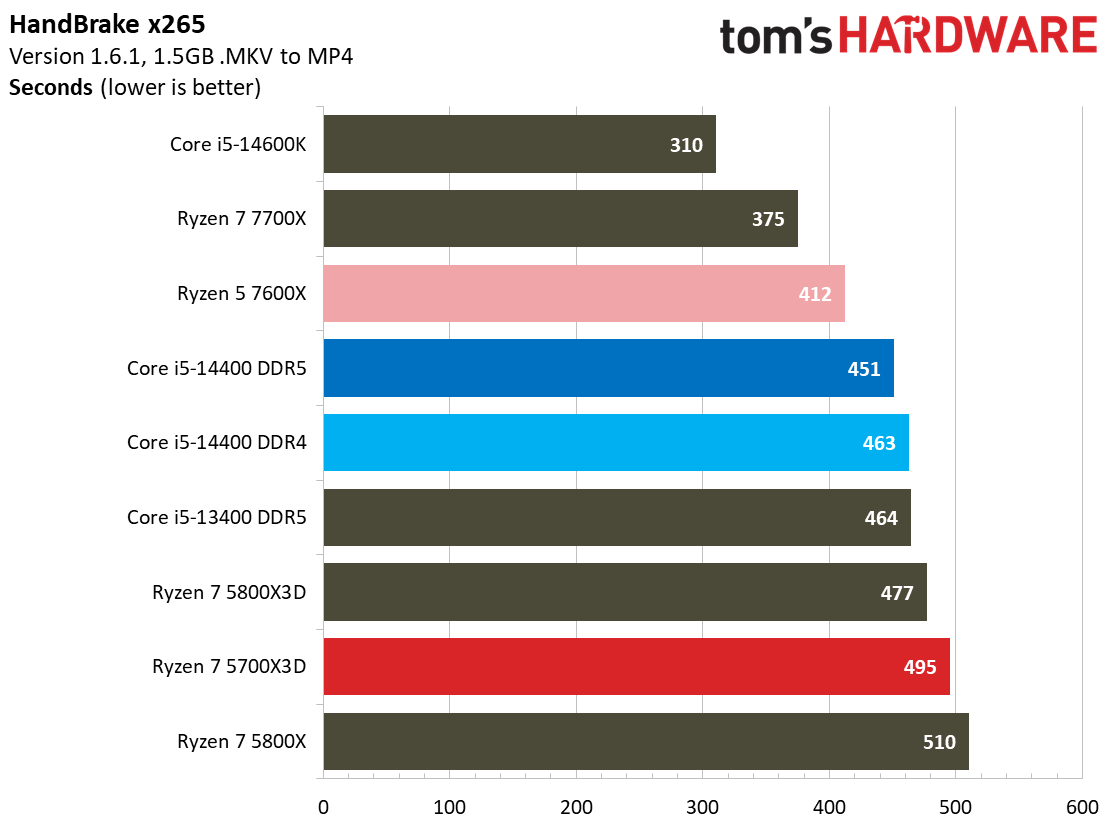

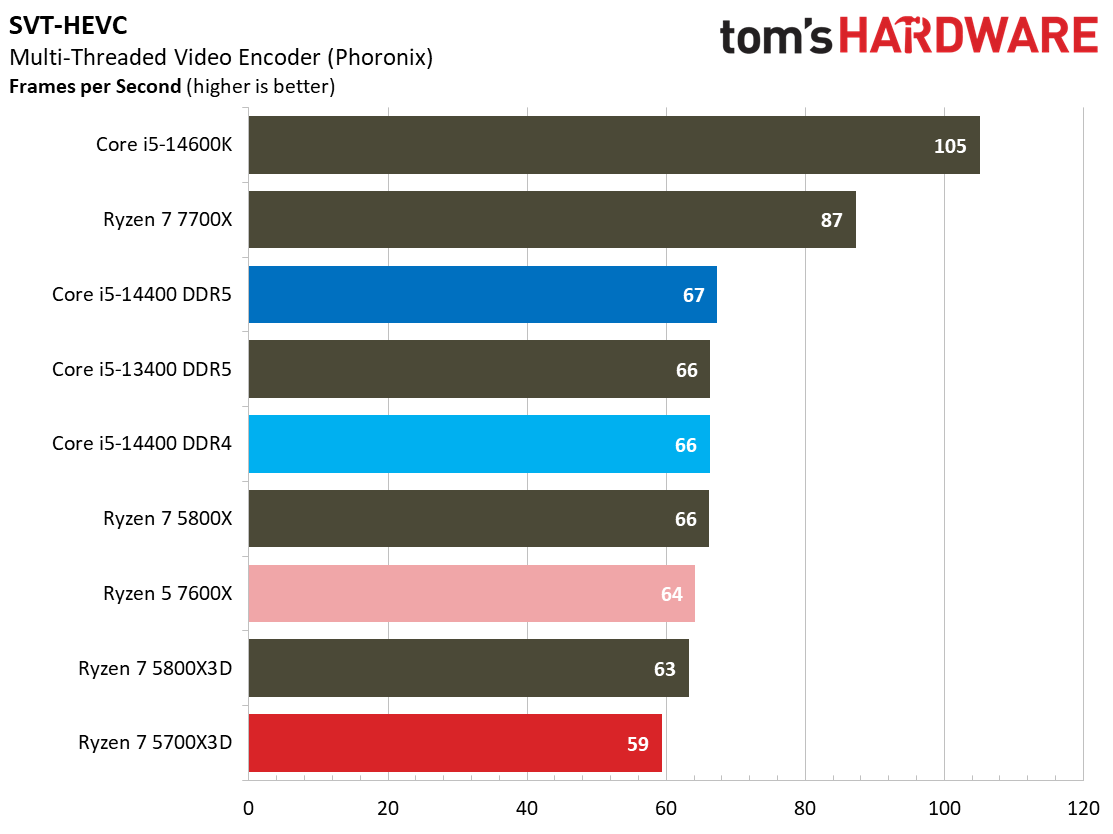
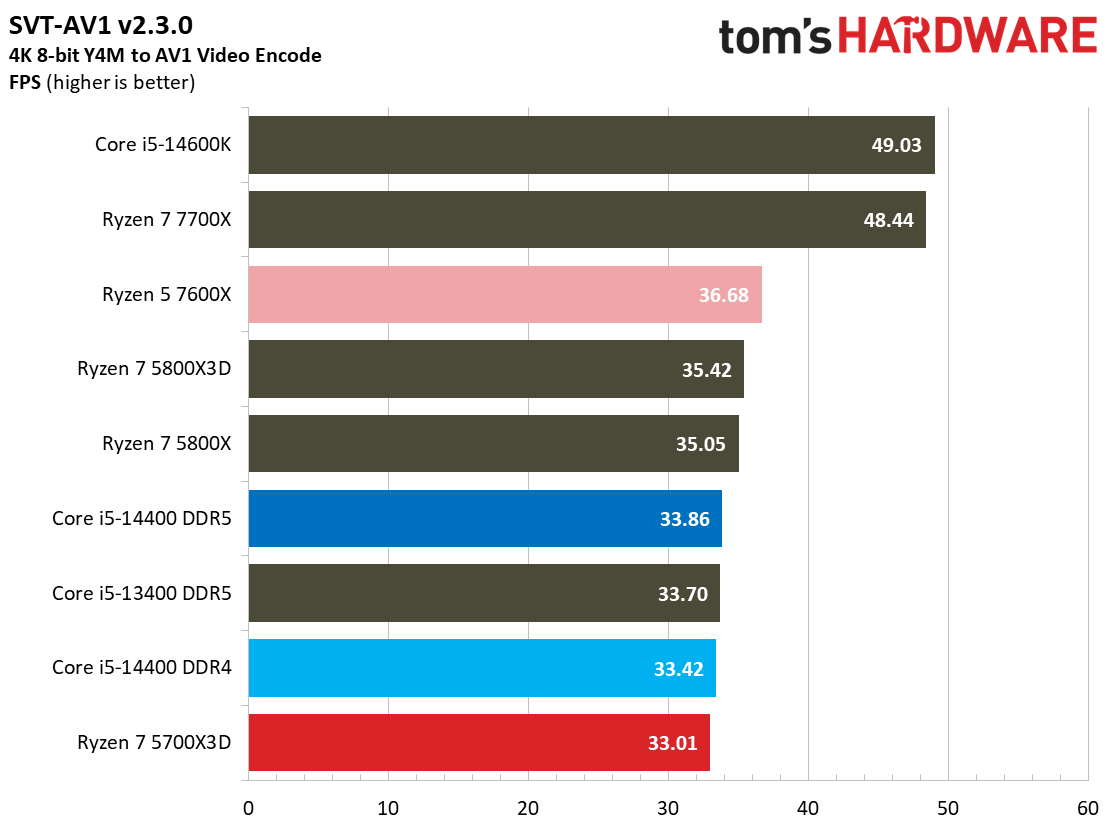
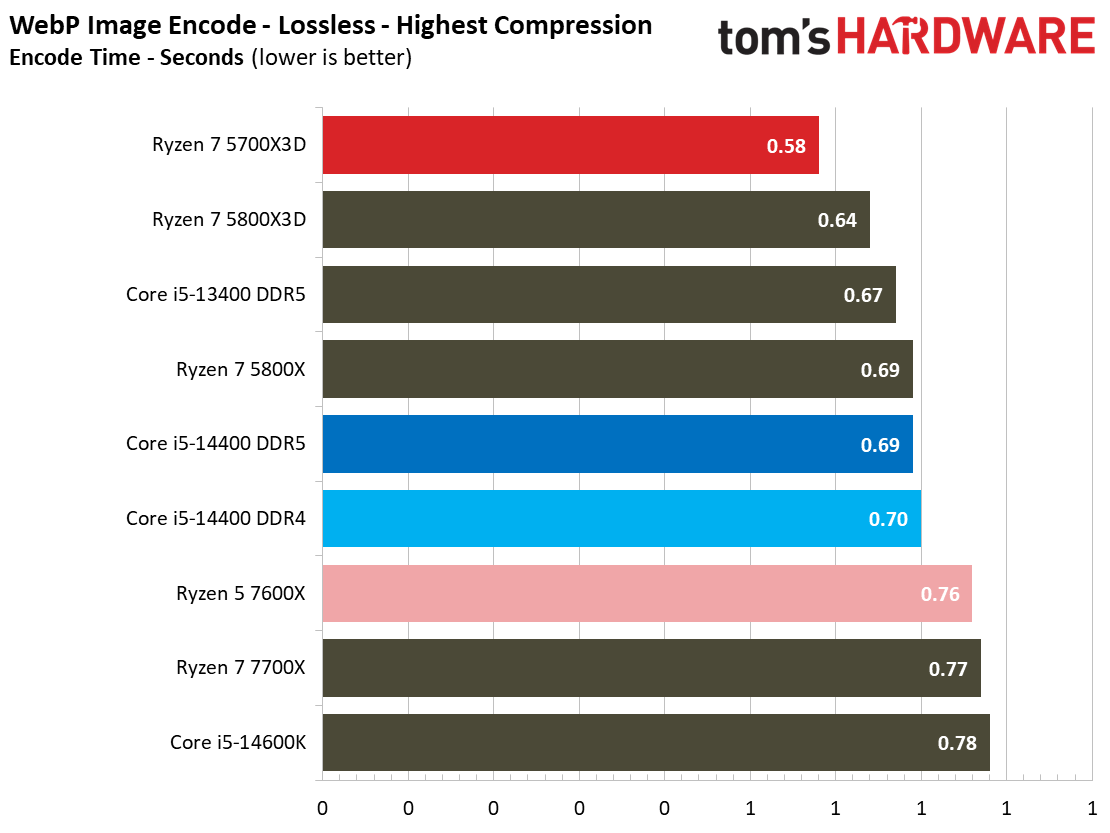
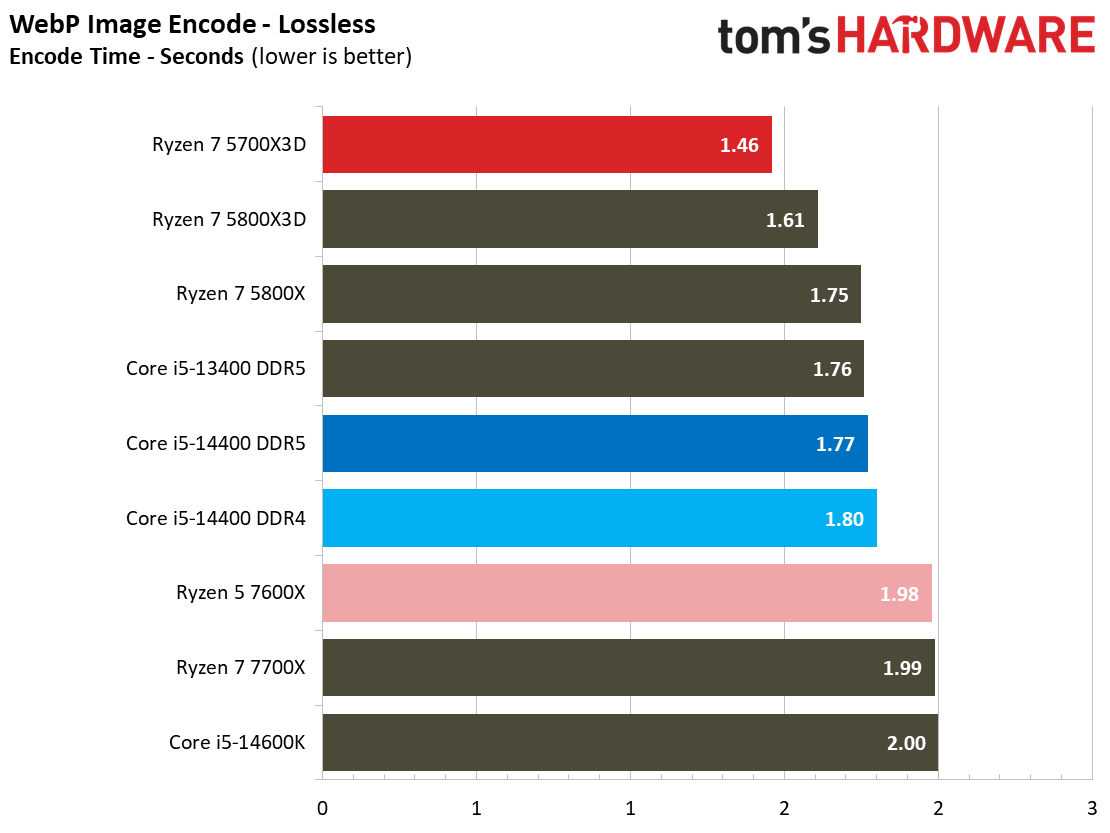
Our tests include single-threaded encoding benchmarks, like LAME and FLAC, but the SVT-AV1 and SVT-HEVC tests represent a newer class of threaded encoders.
Compilation, Compression, AVX on AMD Ryzen 7 5700X3D
This selection of tests spans from massively parallel molecular dynamics simulation code in NAMD to compression/decompression performance. Y-cruncher computes Pi with the AVX instruction set, making for an incredibly demanding benchmark.
Many of these tests aren't very relevant to the target audience for this class of chip, but we include them for completeness.
- MORE: Best CPU for gaming
- MORE: CPU Benchmark Hierarchy
- MORE: Intel vs AMD
- MORE: How to Overclock a CPU
Current page: AMD Ryzen 7 5700X3D Productivity Benchmarks
Prev Page AMD Ryzen 7 5700X3D Gaming Performance Next Page AMD Ryzen 7 5700X3D Power Consumption, Overclocking, Test Setup
Paul Alcorn is the Editor-in-Chief for Tom's Hardware US. He also writes news and reviews on CPUs, storage, and enterprise hardware.
-
Avro Arrow The R7-5700X3D is TOTALLY what AM4 gamers should upgrade to before changing platforms. The only reason that I have an R7-5800X3D is that, when I bought it, it was on sale for $100CAD off and the R7-5700X3D didn't yet exist.Reply
The weird thing about AM4 is that, while it was released in 2016, the first AM4 motherboards weren't released until February of 2017. So technically, it's almost 8 years old but functionally, it just turned 7 last month.
I guess that it took about five months for the AIBs to get the motherboards made. -
parkerthon Reply
I just am amazed we’re at this point that builds can make it so many years for a gaming PC. Things have definitely changed in the last decade. It’s nice to be able to build something that has legs for 5+ years. Then swap a gpu, maybe add new ssd or more memory, and get three more.Avro Arrow said:The R7-5700X3D is TOTALLY what AM4 gamers should upgrade to before changing platforms. The only reason that I have an R7-5800X3D is that, when I bought it, it was on sale for $100CAD off and the R7-5700X3D didn't yet exist.
The weird thing about AM4 is that, while it was released in 2016, the first AM4 motherboards weren't released until February of 2017. So technically, it's almost 8 years old but functionally, it just turned 7 last month. -
Avro Arrow Reply
It's because hardware development has outpaced software development for some time now. There's also the fact that some of the most popular games in the world are also some of the least hardware-intensive.parkerthon said:I just am amazed we’re at this point that builds can make it so many years for a gaming PC. Things have definitely changed in the last decade. It’s nice to be able to build something that has legs for 5+ years. Then swap a gpu, maybe add new ssd or more memory, and get three more.
You could probably still play games like WoW, LoL, Overwatch, CS:GO and Apex Legends with an old i7-2600K or FX-8350 CPU coupled with an old R9 Fury or GTX 980. -
strobolt ReplyThe Core i5-14400 comes with a 'free' bundled cooler, but we advise purchasing a ~$25 tower air cooler instead of using the stock cooler.
This came up also in the 14400 review thread but went a bit unanswered so I'm asking again: why is it advised to get an aftermarket cooler?
Would be interesting to see some real world data on this in addition to the "this is the generally accepted point-of-view". To me it's not even about the cost (which is trivial anyway) but the fact that you're just throwing away a perfectly fine cooler "just because". At least I've not seen any test setup where the 14400 would've throttled with stock cooler. Also I doubt the overall noise level is that much higher either when considering that you're also running a GPU with that. -
35below0 Reply
Agreed. An aftermarket cooler is superior for sure, but also unneccessary.strobolt said:This came up also in the 14400 review thread but went a bit unanswered so I'm asking again: why is it advised to get an aftermarket cooler?
Would be interesting to see some real world data on this in addition to the "this is the generally accepted point-of-view". To me it's not even about the cost (which is trivial anyway) but the fact that you're just throwing away a perfectly fine cooler "just because". At least I've not seen any test setup where the 14400 would've throttled with stock cooler. Also I doubt the overall noise level is that much higher either when considering that you're also running a GPU with that.
That said, AMD's stock coolers have improved in recent years. Intel not so much. It's good enough i guess.
For any more powerfull intel, it would be better to use an aftermarket cooler, K or not. For fan noise if nothing else.
Noise may be irrelevant when GPU fans kick in, but not when they're stopped and the CPU is working hard on something non gaming related.
But there is a hidden penalty to tower air coolers. If your PC case is going to be moved, or bounced around in a car, you have to take off the cooler or risk damaging the motherboard. With intel stock cooler, there is no chance of damage.
14400 may benefit slightly from a better cooler but not much. -
Notton Reply
Stock intel coolers are not "perfectly fine". They are loud and no amount of fan tuning helps quiet them down.strobolt said:This came up also in the 14400 review thread but went a bit unanswered so I'm asking again: why is it advised to get an aftermarket cooler?
Would be interesting to see some real world data on this in addition to the "this is the generally accepted point-of-view". To me it's not even about the cost (which is trivial anyway) but the fact that you're just throwing away a perfectly fine cooler "just because". At least I've not seen any test setup where the 14400 would've throttled with stock cooler. Also I doubt the overall noise level is that much higher either when considering that you're also running a GPU with that.
If you spend $25ish for a cheap tower heatsink the system will run quieter and cooler.
It's actually been a bit of a mystery to me why Intel insists on using those obnoxiously loud fans for over a decade. -
Amdlova Reply
Never is too late :) "AMD want you buy AM5" they don't send to people to test these cheap units, some one need to buy to testHideOut said:This th ing has been out since the end of January. The review is a bit late...
